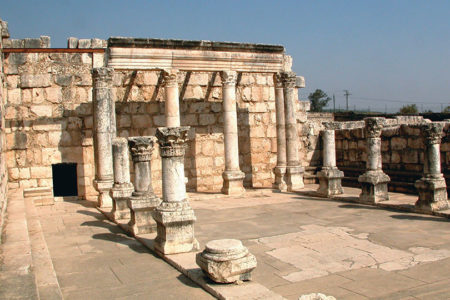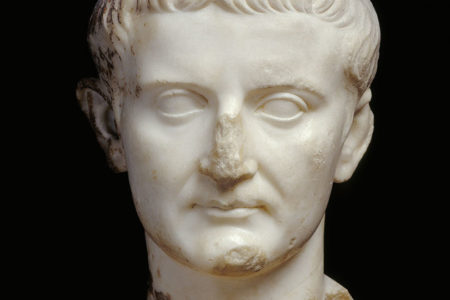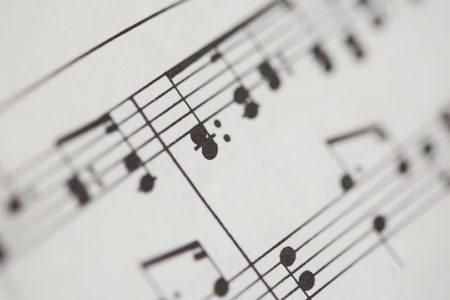The Carols of Christmas
It began with praise! “Glory to God in the highest, and on earth peace, goodwill toward men!” (Lk. 2:14). Since then, the birth of Jesus the Messiah has inspired many wonderful songs. Although some would argue that singing carols began with the angels’ pronouncement in Bethlehem, the exact origin of the Christmas-carol tradition remains a mystery.
The word carol comes from the Italian word carolare. It refers to a “circle dance” accompanied by songs of praise and joy. However, these melodies were actually associated with Celtic pagan fertility rites and festivities of medieval Europe. Later, as churches were established, carols—with pagan words and sentiments replaced—were incorporated into Christian liturgy. At first only the priests and choirs sang them in Latin. But by the end of the Middle Ages, the tunes were fused with common folk songs; and traveling singers and shows throughout Europe popularized the carol.
According to church tradition, Christmas carols should adhere strictly to Luke’s narrative, which has three distinct points: the proclamation of an angel of the Lord, the chorus of the multitudes of angels, and the response of the shepherds.
Today Christmas without carols is almost unimaginable. The histories behind many known songs are lost in obscurity. However, for some, knowing their amazing stories will make the carols all the more dear.
Irish poet James Montgomery (1771– 1854) was six years old when his Moravian missionary parents died in the West Indies. Astonishingly, at age seven he began seminary training at Yorkshire near Leeds, England. There he made a public profession of faith and united with the Moravian Church. As he grew, he began writing poetry and became active in foreign missions and the abolition of slavery. In 1816 he penned the words to the familiar carol “Angels From the Realms of Glory.” His missionary heart is seen in stanza one by his call to the angels to tell the whole world about Jesus’ birth:
Angels from the realms of glory,
Wing your flight o’er all the earth;
Ye who sang creation’s story,
Now proclaim Messiah’s birth:
Come and worship,
Come and worship,
Worship Christ, the newborn King!
John Byron (1692–1763) truly loved his little daughter, Dorothy. One day, using his own system of shorthand, he penned some choice words for her. (His shorthand system later became the Universal English Shorthand method.) When Dorothy awoke on Christmas morning 1745, she found the poem among her gifts. The original title was “Christmas Day for Dolly.” Later, when music was added, it was changed to “Christians Awake Salute the Happy Morn!” His inspiration was Luke 2:10, when an angel of the Lord said, “Behold, I bring you good tidings of great joy which will be to all people.” Stanza two:
Then to the watchful shepherds it was told
Who heard the angelic herald’s voice: “Behold,
I bring good tidings of a Saviour’s birth
To you and all the nations upon earth
This day hath God fulfilled His promised word;
This day is born a Saviour, Christ the Lord.”
There is at least one author and one composer who today might not recognize a carol they both helped pen. Charles Wesley (1707–1788), brother of John Wesley who founded the Methodist Church, was a great hymn writer. When the English Puritan parliament came to power in the 17th century, it had abolished Christmas festivities as too pagan and worldly. Eventually the church was left with a void of hymns and carols. To help fill this need, Charles wrote his most famous carol that opened with he words Hark, how the welkin (heaven) rings. But over Wesley’s objections, his friend, the great revivalist George Whitefield, changed the words to Hark the herald angels sing. Later, in 1840, Felix Mendelssohn (1809–1847), a Jewish believer in Jesus, composed a secular cantata to celebrate Johann Gutenberg’s invention of the printing press.
In 1855 English musician William H. Cummings put Wesley’s words and Mendelssohn’s music together to create the well-known carol “Hark the Herald Angels Sing.” Through this combination, the fundamentals of the faith—the virgin birth, the incarnation, and eternal life through Jesus Christ—are reaffirmed in the hearts of the faithful even today. Stanza one:
Hark the herald angels sing
“Glory to the newborn King!
Peace on earth and mercy mild
God and sinners reconciled”
Joyful, all ye nations rise
Join the triumph of the skies
With the angelic host proclaim:
“Christ is born in Bethlehem”
Hark! The herald angels sing
“Glory to the newborn King!”
The Mexican-American War (1846–1848) had ended. But racial and political skirmishes waged throughout the frontier of the United States. In 1849 a Unitarian minister in Wayland, Massachusetts, was encouraged to write a carol. As a “humanist,” Edmund Sears specifically emphasized the social significance of the “on earth peace, goodwill toward men” message. His tune was later put to a traditional English melody, and the familiar carol “It Came Upon the Midnight Clear” was introduced. The fourth and final stanza anticipates the peace on Earth that shall come someday:
For lo! the days are hastening on,
By prophet-bards foretold,
When with the ever circling years
Comes round the age of gold;
When peace shall over all the earth
Its ancient splendors fling,
And the whole world send back the song
Which now the angels sing.
A 15-year old boy complained to his father that church hymns were boring and meaningless. His father, a member of a strict Independent Congregational church, challenged his son, Isaac Watts (1674–1748), to do better. At 18 Isaac wrote his first hymn. By the end of his life, he had written more than 700. He is considered the father of English hymnody.
In 1719 God impressed Psalm 98 on Isaac’s heart. He wrote only the words to his carol, called “Joy to the World.” In 1839 (Michael Nicholson/Corbis) Lowell Mason, an American composer and music educator, took the lyrics and wove them into two musical phrases from George Frederick Handel’s (1684–1759) “Messiah, Lift Up Your Head” and “Comfort Ye.” The result is the familiar tune used today. Of all the sacred carols, “Joy to the World” is perhaps the most uplifting declaration of the Christmas message. It speaks of Messiah’s First and Second Comings. Stanzas one through four:
Joy to the world! the Lord is come!
Let earth receive her King;
Let every heart prepare him room,
And heav’n and nature sing.
Joy to the earth! the Savior reigns!
Let men their songs employ,
While fields and floods, rocks, hills, and plains,
Repeat the sounding joy.
No more let sins and sorrows grow,
Nor thorns infest the ground;
He comes to make his blessings flow
Far as the curse is found.
He rules the world with truth and grace,
And makes the nations prove
The glories of his righteousness,
And wonders of his love.
The organist at Holy Trinity Church, Philadelphia, Pennsylvania, could not sleep. His pastor, the Rector Phillips Brooks (1835–1893), had penned a poem in 1865 when he had visited Bethlehem. Now, in preparation for a special Christmas service for children, Lewis H. Redner (1830–1908) was asked to compose a simple melody for the poem. He struggled all night. Tired, he fell asleep. The story goes that during the night, he awoke with “an angel strain” sounding in his ears. He immediately jotted down the melody, which he called “a gift from heaven.” Later that day, in December 1867, the children’s choir of the church introduced the modest and now classic “O Little Town of Bethlehem.” Interestingly, people outside the church did not learn of the carol until it was published in a newspaper 10 years later! Stanza one:
O little town of Bethlehem,
how still we see thee lie!
Above thy deep and dreamless sleep
the silent stars go by.
Yet in thy dark streets shineth
the everlasting Light;
The hopes and fears of all the years
are met in thee tonight.
A mood of severe melancholy overtook American poet Henry Wadsworth Longfellow. His wife had accidentally set her clothes on fire while lighting candles and died in 1861. The American Civil War had broken out in April the same year. Longfellow’s oldest son ran off and enlisted in the Union Army. On November 27, 1863, while in a skirmish during the battle of New Hope Church, Virginia, 17-year-old Lt. Charles Appleton Longfellow was severely wounded. His father brought him home to care for him.
Reflecting on all the horrors associated with the bloody conflict and the wounding of his son, Henry Wadsworth Longfellow sat at his desk on Christmas Eve 1863 and penned a poem he called “Christmas Bells.” Originally, it was a strong antiwar tune. But later some of his political partisan phrases were modified when it was put to music in 1872. Today it is known as “I Heard the Bells on Christmas Day.” It is a classic carol offering a message of hope that God is in control and that peace will return to the earth. Stanzas four and five:
And in despair I bowed my head;
“There is no peace on earth,” I said,
“For hate is strong, And mocks the song
Of peace on earth, good will to men!”
Then pealed the bells more loud and deep;
God is not dead; nor doth he sleep!
The wrong shall fail, The right prevail,
With peace on earth, good-will to men!
On December 24, 1818, priest Joseph Mohr (1792–1848) was in trouble. He needed a hymn for the midnight Christmas Eve service at St. Nicholas in Oberndorf, Austria. The story goes that the organ of his church was broken. So he walked more than a mile in the cold to the neighboring town of Arnsdorf to visit Franz Gruber (1787–1863), the church’s organist and choirmaster. Two years earlier, in 1816, Mohr had written a simple poem. He hoped his friend could put it to music.
According to popular legend, Gruber composed an uncomplicated melody arranged for two solo voices, choir, and guitar. Just in time for the midnight service on a snowy evening in 1818, the most famous Christmas carol of all time was sung. It literally became a song that was to be heard around the world: “Stille Nacht,” or “Silent Night.” The song has been translated into a multitude of languages. Its dominant message of heavenly peace has crossed all borders and cultures, and it has conquered the hearts of people everywhere. Stanza three:
Silent night, holy night!
Son of God love’s pure light.
Radiant beams from Thy holy face
With the dawn of redeeming grace,
Jesus Lord, at Thy birth.
Jesus Lord, at Thy birth.






